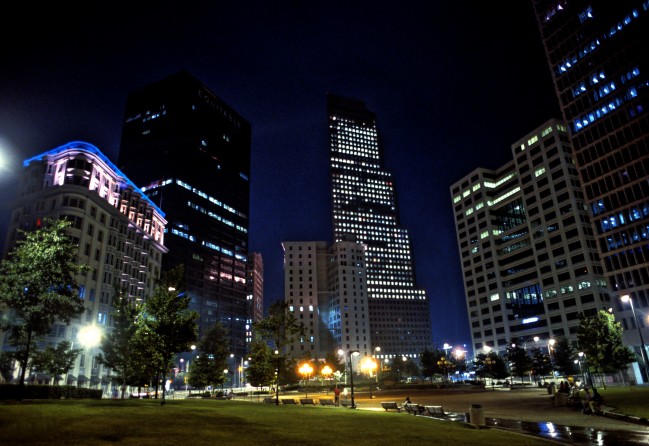
Most photographers shoot 90% of their images in the daylight, however, sometimes they have to shoot at night. Even for some professional photographers, night photography can be tricky.
Even without programs like Photoshop, there are a few basic tips that when applied to shooting night photography can get you very good results.
One basic rule is that high ASA’s, or ISO readings, (400, 800, etc.) are more sensitive to light, registering more ambient light than lower ASA’s (100, 200). Thus, it is advantageous to place your ASA’s as high as you can without creating noise in the image. One must also keep in mind that the higher the ASA, the higher the amount of contrast.
Contrast is not always a bad thing. Sometimes cool effects can happen at very high ASA’s. My advice is to run a lot of tests with your camera. Test will give you a solid idea of what to expect from your particular camera at any given setting.
Understanding the basic rule of ASA’s is crucial for getting really great shots at night. Another tip is to bracket the shot. Bracketing is basically making multiple exposures, usually 1 to 2 stops over and 1 to 2 stops under what the “normal” reading for any particular shot is. At night, full stops work best rather than 1/2 stops, although, if you don’t have software like Photoshop, or comparable software, 1/2 stops would be your best option.
Very rarely have I ever used an image shot BELOW average exposure, so, when I shoot night shots, I make sure that I overexpose my images…sometimes more than 2 stops. I have had some images that were shot over 2 stops and they looked great.
You have to be careful shooting night shots. Sometimes the lights in the image will throw the meter off because they are so bright (although specular). If you expose an average exposure of this situation, you may end up with very little ambient light and nothing but street lamps. I’m a firm believer in “getting it in the can” so to speak, meaning, film is cheap! Get the shot! Expose as many stops in as many directions as you need. You can eliminate exposures later but you can’t always go back to shoot.
So, remember two main rules of shooting at night….shoot with higher ASA’s and bracket your shots. Oh yeah, a tripod is a MUST!
Good shooting!